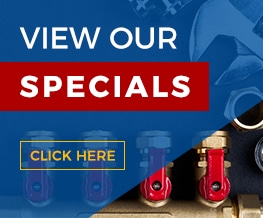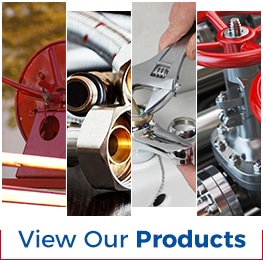
Nothing lasts forever. Eventually, even expensive, high-quality hydraulic hoses and accessories will begin to show signs of wear and tear. Although it’s inevitable that these devices will one day deteriorate and become unusable, the last thing you’d want is for them to become damaged sooner than later – or worse: damaged when you least expected them to. You spend your hard-earned cash on industrial hose equipment, so you deserve for it to be safe to operate at all times.
But unfortunately, even with good care, your industrial hose may one day fail on you. If and when it does, it can be dangerous, particularly if you’re utilizing the hose at the time it begins to deteriorate. So, how do you make sure your application won’t become unsafe on the job? By doing the following three things, you can ensure your equipment will be as safe to use as possible.
- Always preform visual inspections before use. Even with newer hoses and its associated accessories, it’s always necessary to visually inspect your equipment before you go to use it. Never turn on the machine if you notice that the hose has kinks, twisted regions, stiff or cracked sections, or flattened areas. Additionally, refrain from using your equipment if you notice fitting slippage, a damaged cover, or a cover that is loose or soft. It’s also important to be on the lookout for worn shields, guards, or clamps as well as an excessive buildup of dirt. These are all signs that your hose or accessories may need to be completely replaced or at least tended to before use.
- Understand that your supply needs to be replaced at certain intervals. Although there’s no saying exactly when your hose and accessories will eventually degrade, it’s important to note that these pieces of equipment all have specific lifespans. That said, you should be aware of when these items are expected to deteriorate. Keeping track of the ages and expected lifespans of all your pieces of equipment is important for optimal safety. Doing so can give you time to replace your equipment in time before you actually need to utilize it and, in addition, can help you remember to opt for new hoses and accessories at the right time, so you don’t end up working with potentially dangerous, older equipment.
- Execute functional testing regularly. To test for possible leaks and other malfunctions, it’s critical to operate your system at the maximum operating pressure. When you perform these regular functional tests, make sure that your hose isn’t operating greater than its maximum working pressure. It’s peak or surge pressures should also be no greater than this limit.
Are you looking for new industrial hoses, fittings, adapters, and other hose accessories to replace your old, worn-out ones? Look no further! ASJ Hose & Fittings has a broad array of different industrial hoses and hose components to pick from. Simply contact us today by giving us a call at (951) 735-1351, so we’d be glad to let you know more about our supply!



 Phone:
Phone: